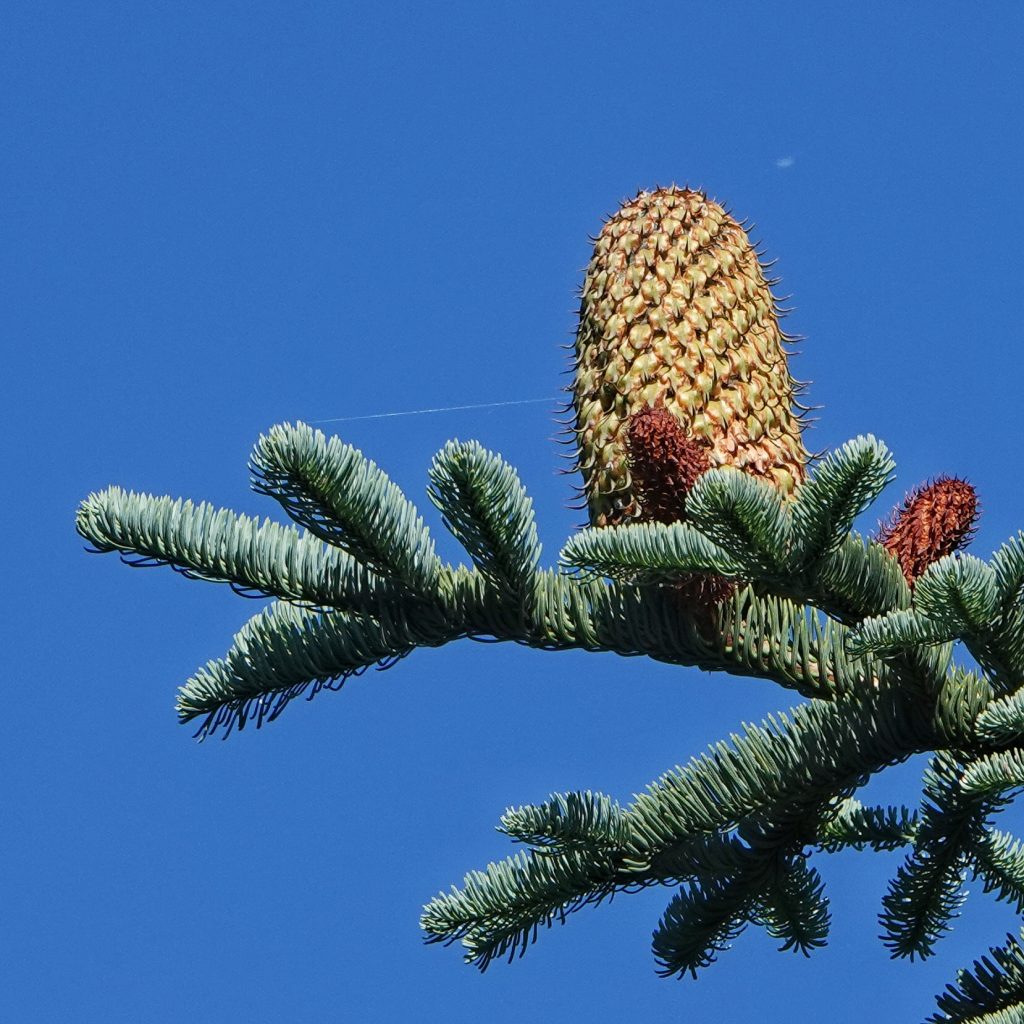
If you can see its cones, and they haven’t disintegrated yet, Abies procera is the easiest fir to identify, because its 4-6” long cones have straw to olive colored bracts that extend beyond the scales and are reflexed so that they cover 90% of the scales and hide their reddish brown coloring, and stick out from the surface like thorns. No other fir cones in our region look quite like this. Certainly not the 2-4” purplish cones with hidden bracts of Abies lasiocarpa, which is our only other true fir with stomatal bloom on both surfaces of the needles.
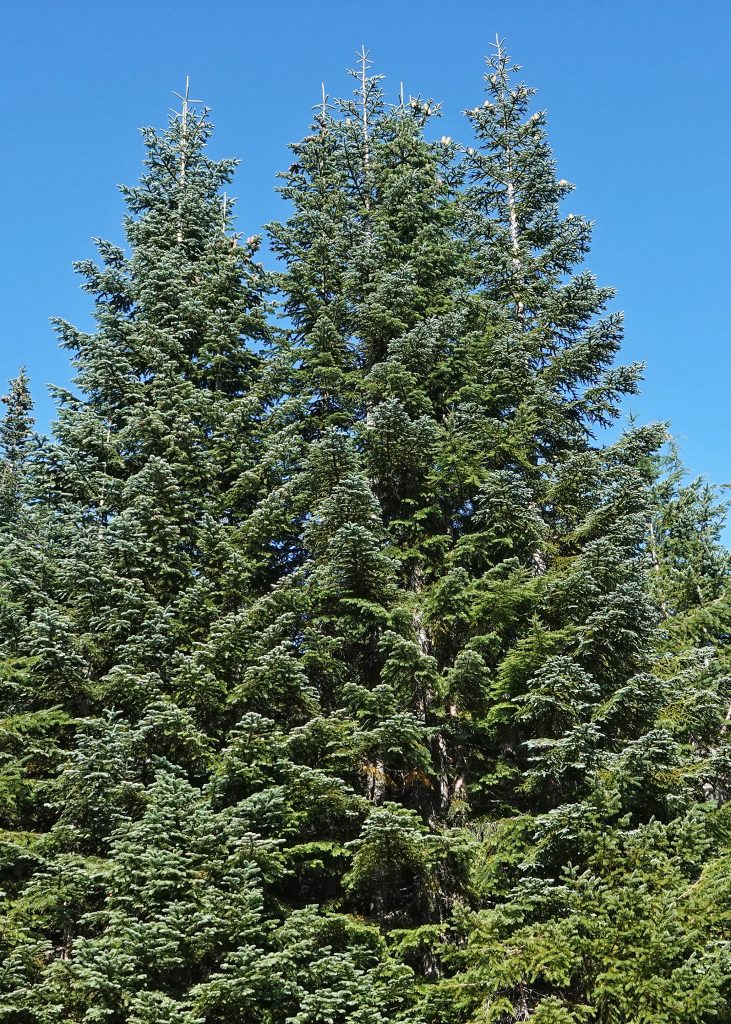
Even in the absence of cones the two species are fairly easy to differentiate, as long as you can get a good look at the needles, because, even though the needles of both species are 20-40mm long, are massed on the top of the twig, and tend toward blue green in color, those of noble fir have two lines of stomatal bloom on top and bottom of the needle (separated by a groove on the top side and by a ridge underneath), while the top side of a subalpine fir needle has a single wide band of stomatal bloom covering a central trough.
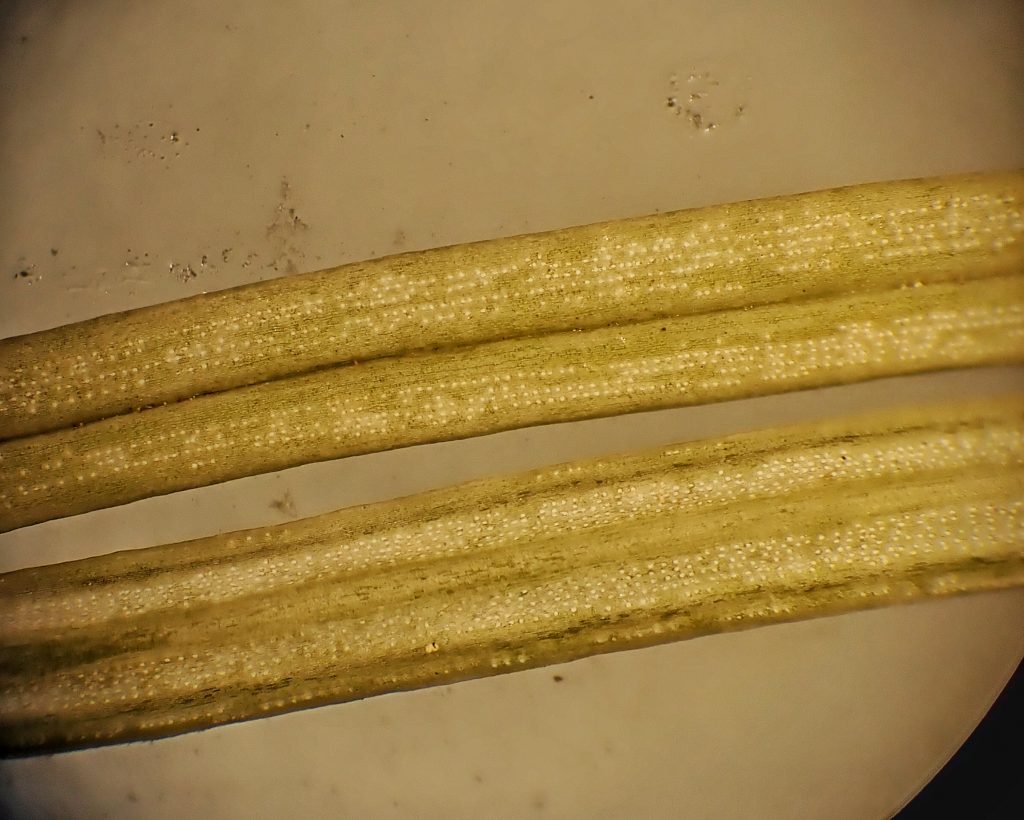
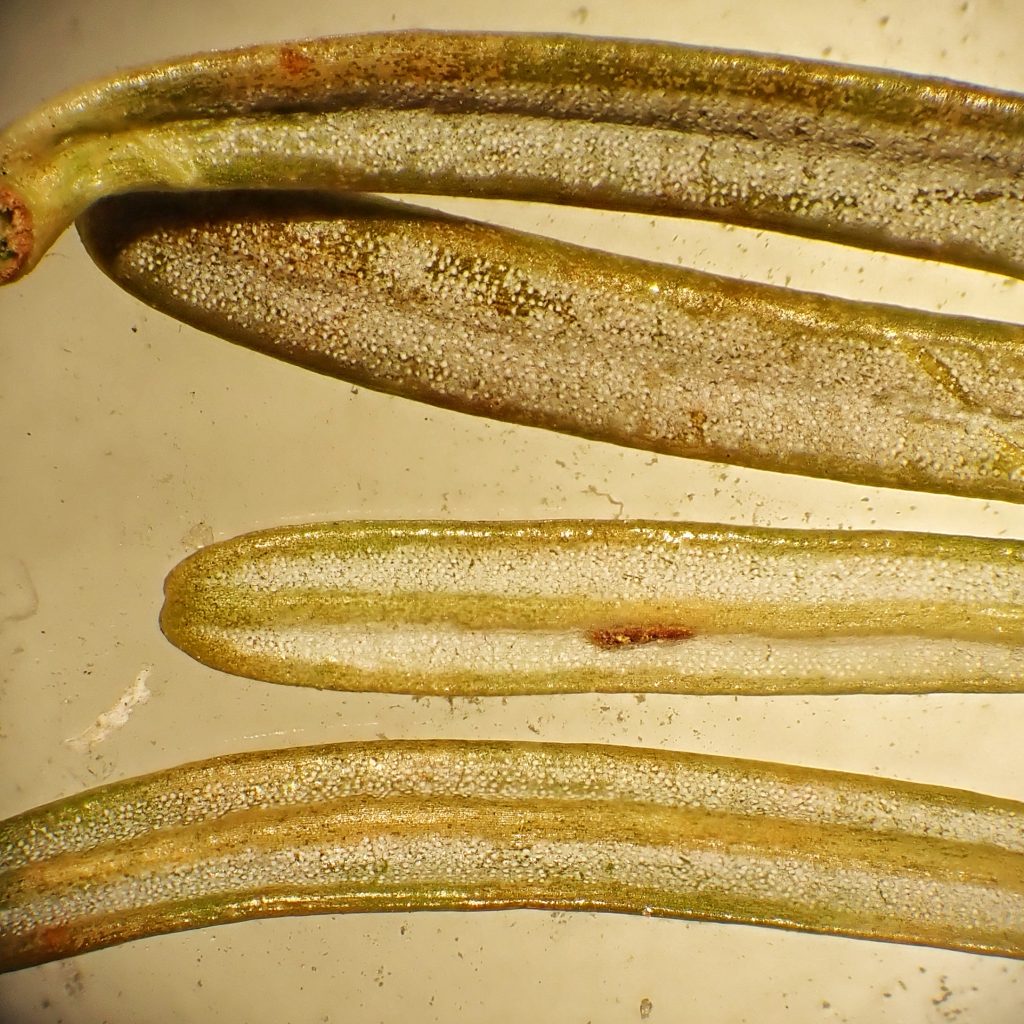
Some authors make much of the fact that the needles of Abies procera parallel the branch just past attachment to the twig, and then bend away from it, giving the needle a ‘hockey stick’ appearance when viewed from below, and this is a consistent characteristic of noble firs. However, it can also be found on some needles of many other firs, though the bend is seldom as sharp, and it is not a consistent trait throughout the tree. This is yet another reason to utilize as many different traits as possible when making an identification, and to examine a variety of different areas of a given specimen, so as to give yourself the best chance of making a correct and positive identification.
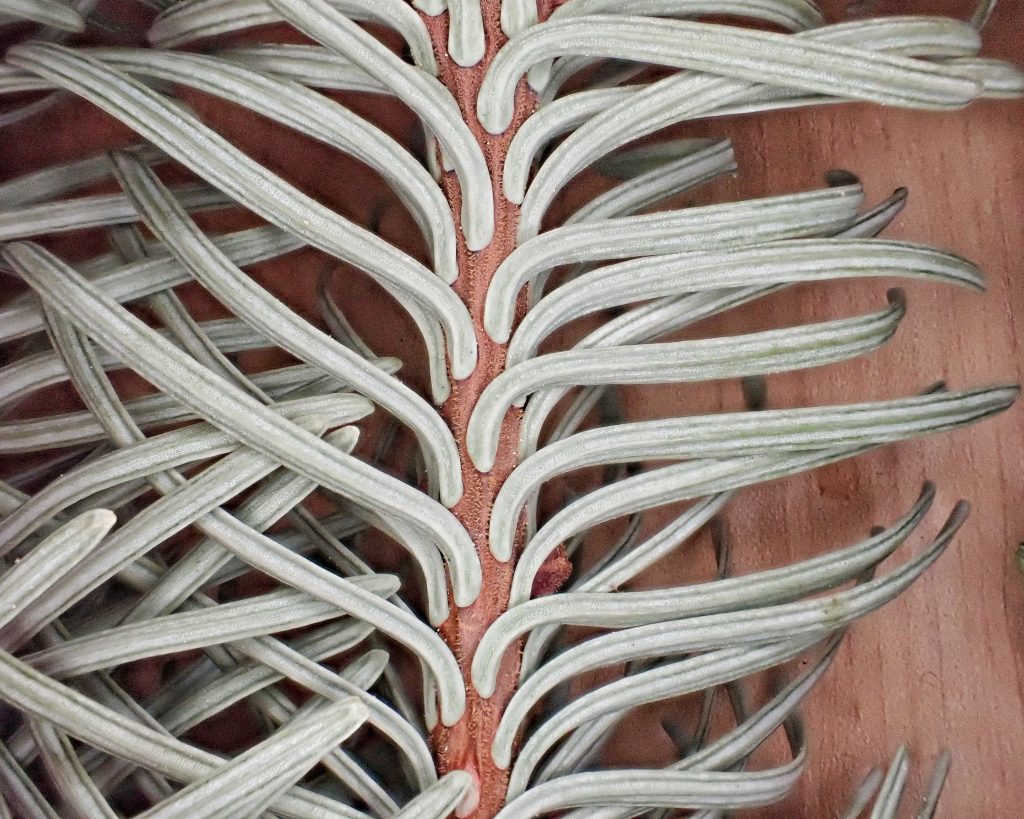
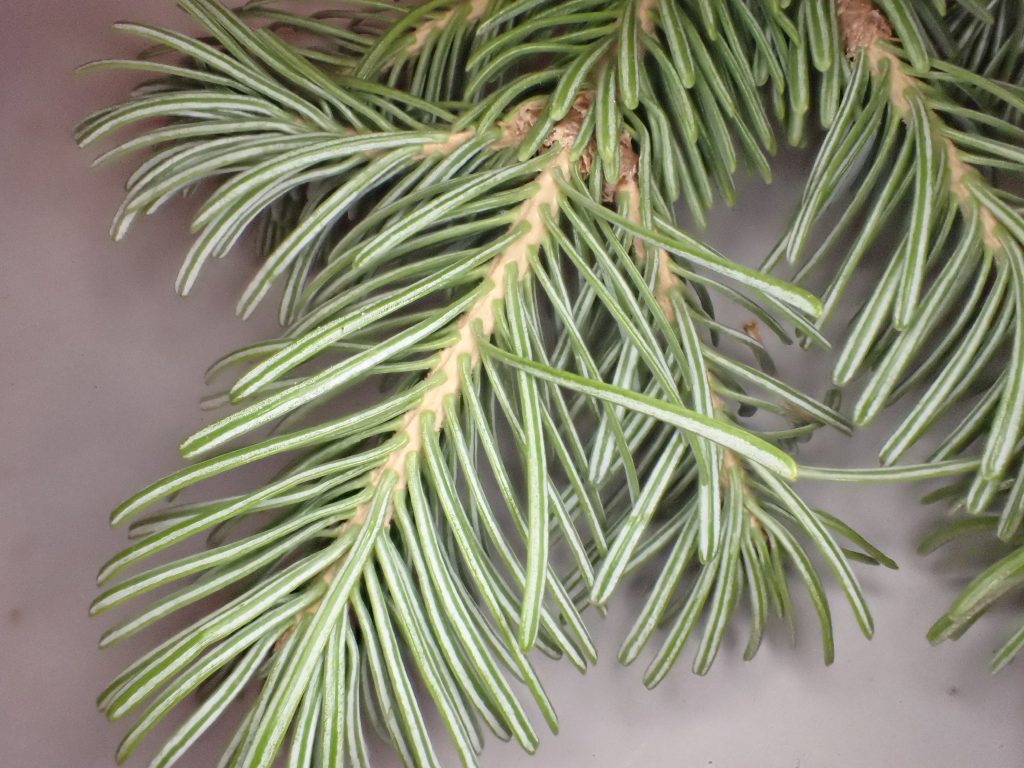
Identification is much trickier when it is too early or too late in the season to see complete cones, because large Abies procera are often lacking needled branches for up to 2/3 of their length. But this is itself an identification trait, because the vast majority of specimens of other firs have branches for well over half their length. From a distance this is a particularly useful way to distinguish noble firs from subalpine firs, because subalpine firs usually have branches that go all the way to the ground, as well as a densely branched, very narrow, isosceles triangle shape, whereas noble firs have a more open, wider, triangular shape. Finally, from my very limited experience, the bark of mature Abies procera has rectangular plates that seem scalier than other firs.
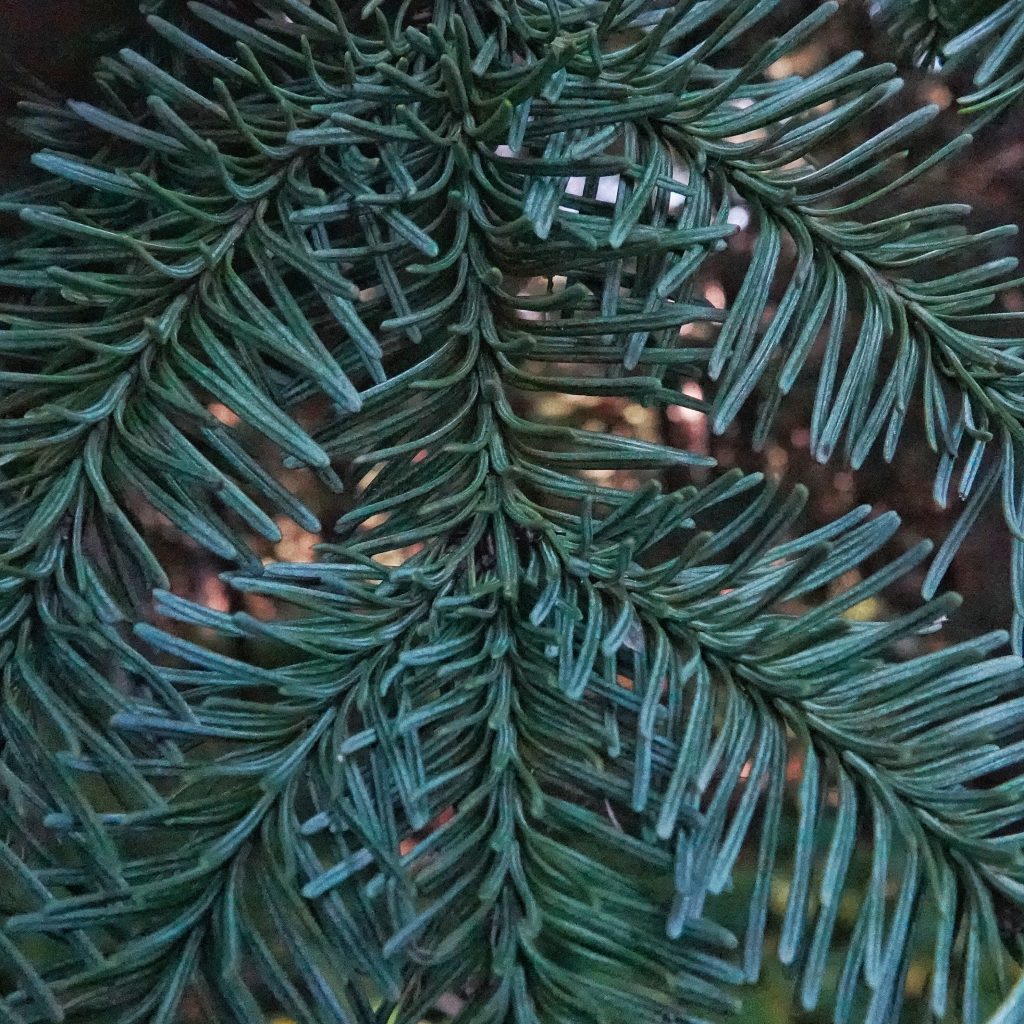
I’m not sure why this is, but there doesn’t seem to be the huge numbers of species of insects that consume noble fir that I’m used to finding for other conifers. It’s possible, since the numbers are down across the board, that it is because they are under surveyed, but this seems unlikely since they are usually in accessible areas, and are commercially harvested by timber companies, who frequently pay to find out what’s eating their product. I could find only 3 species of moths that utilize this species, whereas other conifers have dozens, and nothing at all for longhorn or buprestid beetles. Even the little aphid-like true bug Adelges picea, which is highly problematic for Abies grandis, A. amabilis, and A. lasiocarpa (subalpine fir) doesn’t infest it to any particular degree. But I can find no information on why it is resistant to insect colonization.

This is one of the most wind tolerant of the conifers, due to a spreading root system as well as a taproot (although that doesn’t form for several years). But it is the most shade intolerant of all true firs, and cannot regenerate under a closed canopy. It is also fire intolerant, though if seed banks survive the fire it can quickly take advantage of the open, sunlit conditions, and trees may form viable seed in 20 years. It survived quite well after the 1980 eruption of Mt. St. Helens, because many young trees were still covered by deep snow, and it has recolonized large swaths of ground. It was also planted extensively in that area, because the area of devastation was so large that there weren’t enough Douglas-fir to fill it. For more information on the ecology of this species, see Franklin’s thorough account at Abies procera Rehd.
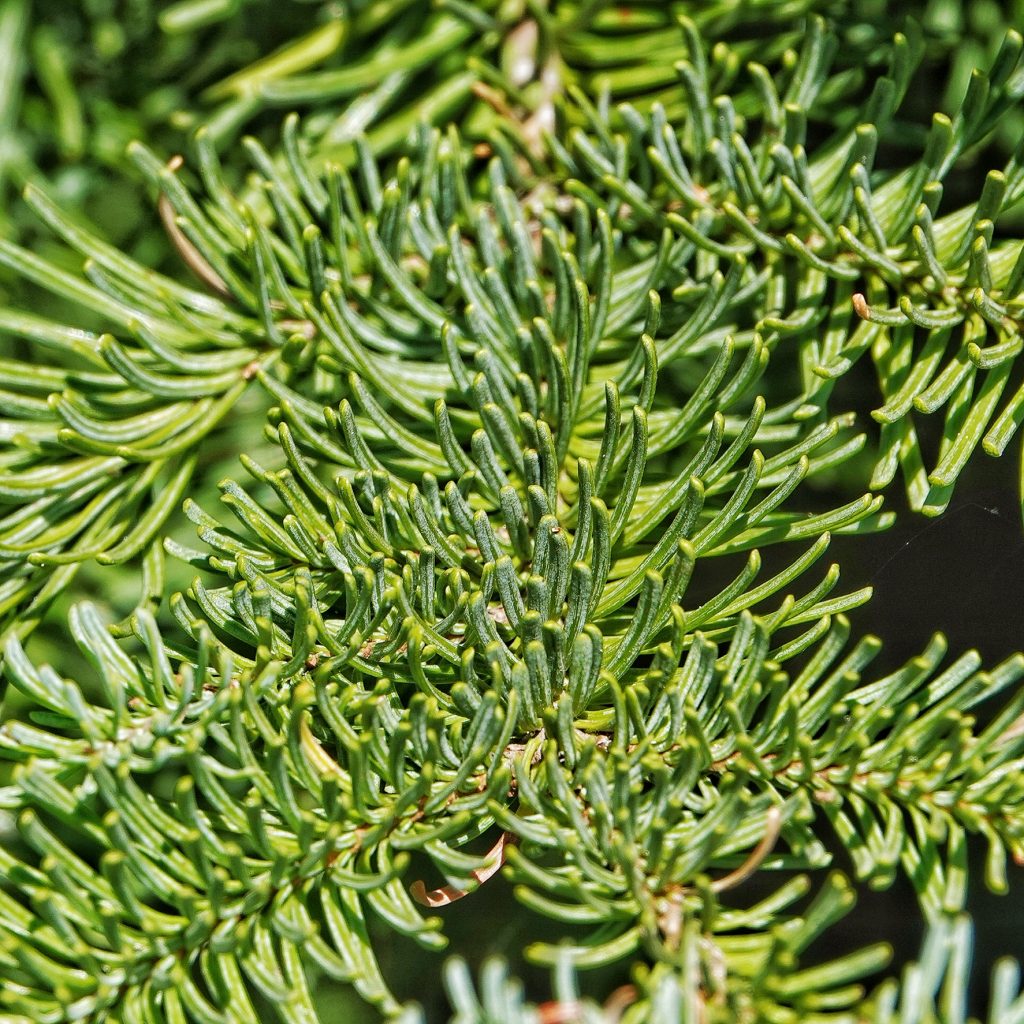
The wood of Abies procera is stronger than that of other true firs, which led to loggers calling it larch to increase its marketability. That is why, on opposite sides of the Columbia River, there are Larch Mtn.s which have few, if any, actual larches. Since it is also relatively lightweight, it was often used for specialty items like ladders, and in airplane construction. It also constitutes over 10% of the Christmas tree production in the PNW, and sells for 35-40% more than Doug-fir. The greenery is is high demand in the floristry trade, and it is a popular ornamental tree. The only ethnobotanical uses I could find for this tree are that the needles were smoked, or made into an infusion, or carried around the neck, to prevent or treat colds, and that needled branches were rubbed over the skin as a deodorant.
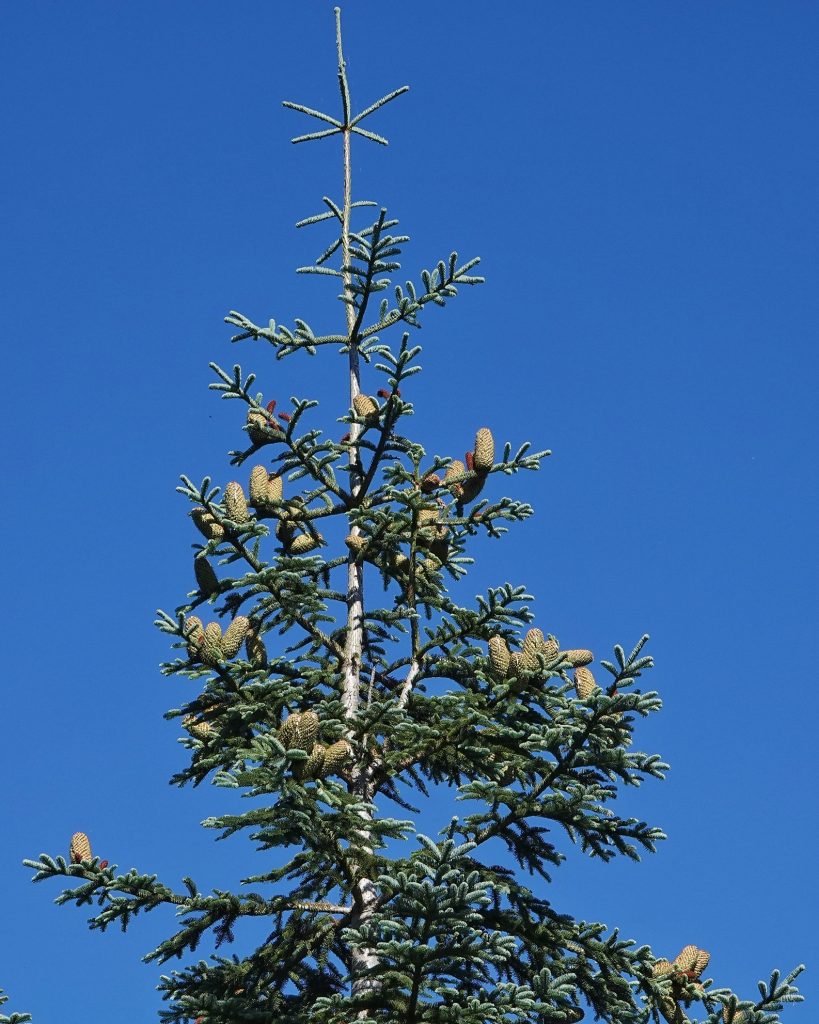
Description-Large (some are over 250’ tall with an 8’ dbh, but more commonly to 150-200’ tall with a dbh of 4-6’) conifer with well spaced branches that are often absent from 1/2-2/3 of the bole, needles that bend upward, and cones with exserted bracts; needles are slightly bluish green, have two rows of stomatal bloom on each side, and have a ‘hockey stick’ shape because they bend just past the leaf base; cones are near the top of the tree (as are all fir cones) 4-6” tall, scales reddish brown, exserted bracts straw to olive colored and mostly hide the scales, and are reflexed so that they extend away from the cone giving it a shaggy or spiky appearance.
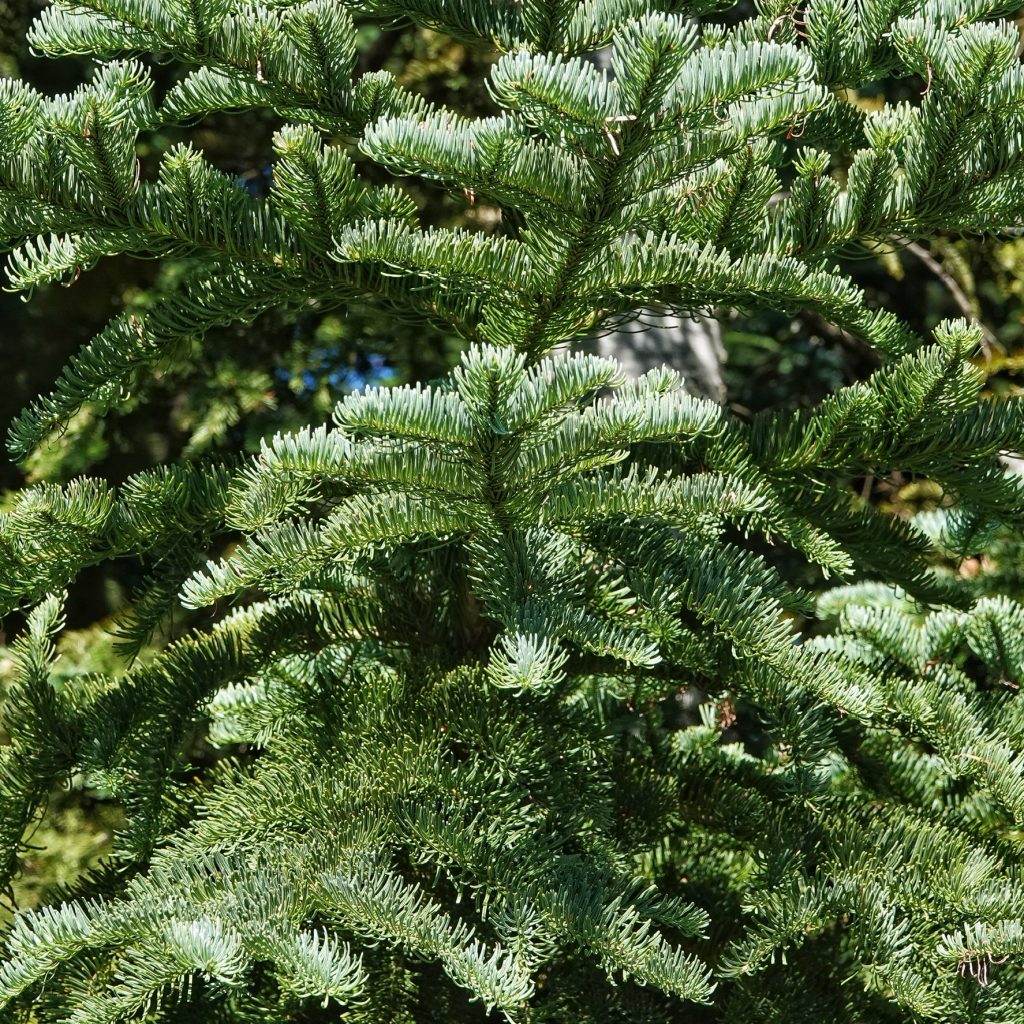
Similar species-See above for Abies lasiocarpa; A. grandis and A. amabilis only have stomatal bloom on the underside of the needles; Douglas-fir, western hemlock, and mountain hemlock have pendent cones, and leaf scars that are at least a roughening of the bark; Engelmann spruce have persistent, peg-like leaf bases, pendent cones, and stiff, pointed needles.
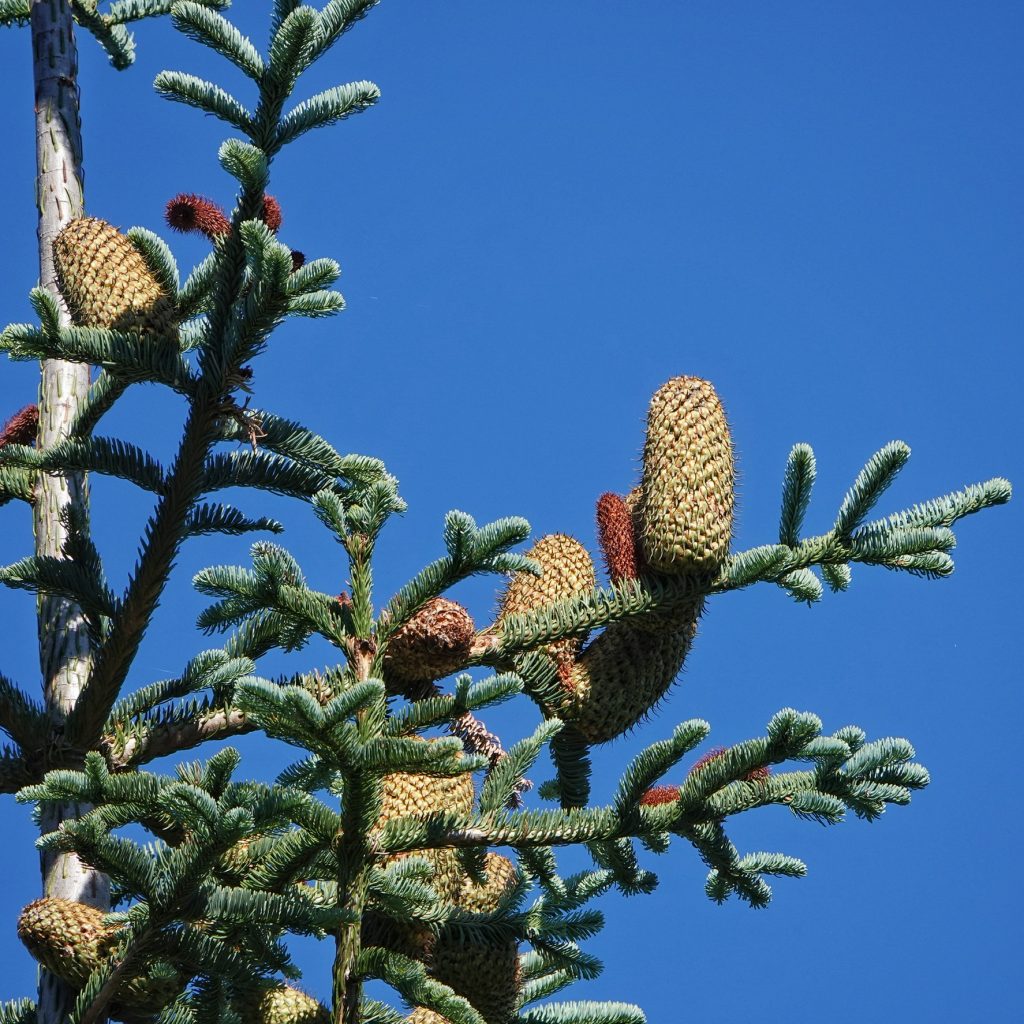
Habitat-Moist to mesic montane conifer forests, usually from 3,000’ (though occasionally down to 1,000’, e.g. in the Columbia River Gorge) to subalpine.
Range– Native only to Washington and Oregon; found primarily in the Cascades between 44⁰ and 48⁰ (McKenzie River to Stevens Pass), with isolated populations at higher elevations of the northern Coast Range, and in the Willapa Hills.
Reproductive timing-Cones form in May, are pollinated and fertilized in June/early July mature in late August, and begin disintegrating in late September; the whole cycle happens in one growing season.
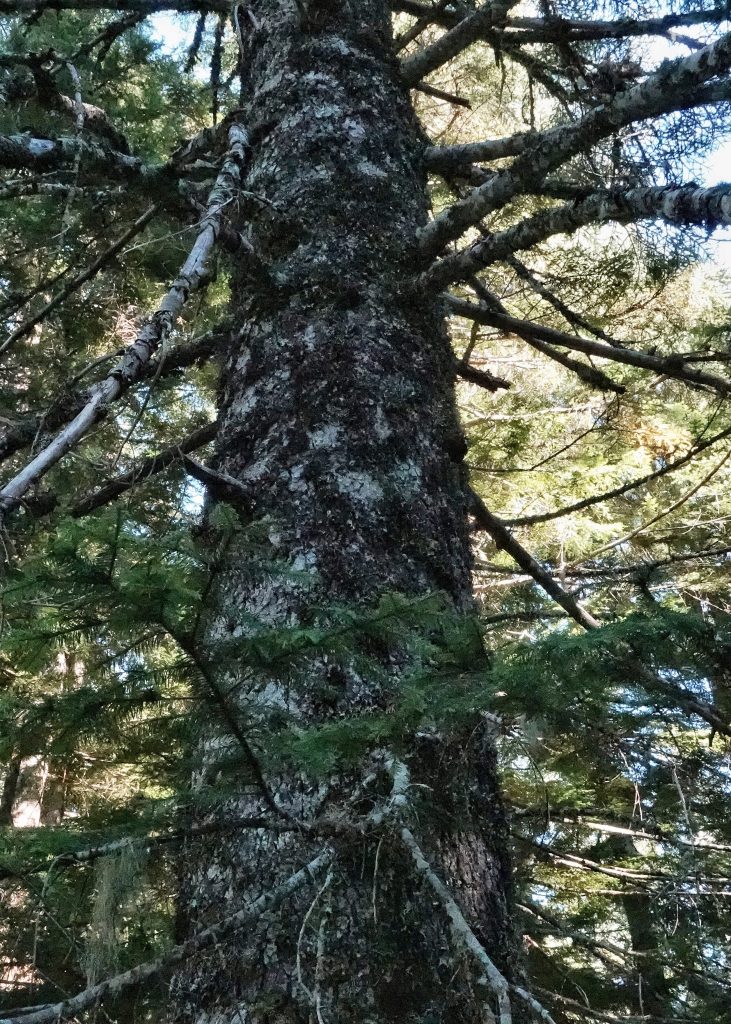
Eaten by-Larval host for the leaf mining moth Marmara oregonensis, the cone boring moth Eucosma siskiyouana, and Dioryctria abietivorella, whose larvae feed on all parts of the tree; larvae of the chalcid wasp Megastigmus pinus, and the horntail wasp Sirex varipes; maggots of the lance flies Earomyia barbara and E. longistylata; the bark beetles Pseudohylesinus nobilis, P. granulosa, and P. dispar, and the weevil Pissodes dubious; black bears strip the bark from saplings, presumably for food; deer, elk, and grouse browse the foliage and buds, and squirrels, chipmunks, and many birds, eat the seeds.
Etymology of names–Abies is from the Latin word for ‘firs’. The specific epithet procera is from the Latin word for tall, which is appropriate since this is considered to be the tallest true fir.
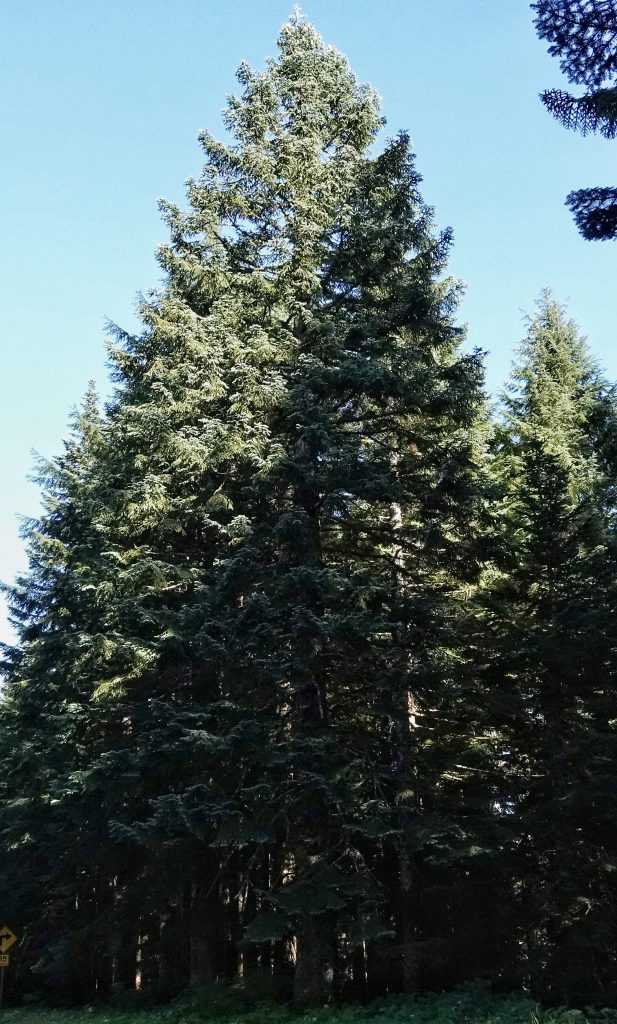
Abies procera (noble fir) description
Noble Fir, Abies procera | Native Plants PNW
https://conifersociety.org/conifers/abies-procera
BRIT – Native American Ethnobotany Database
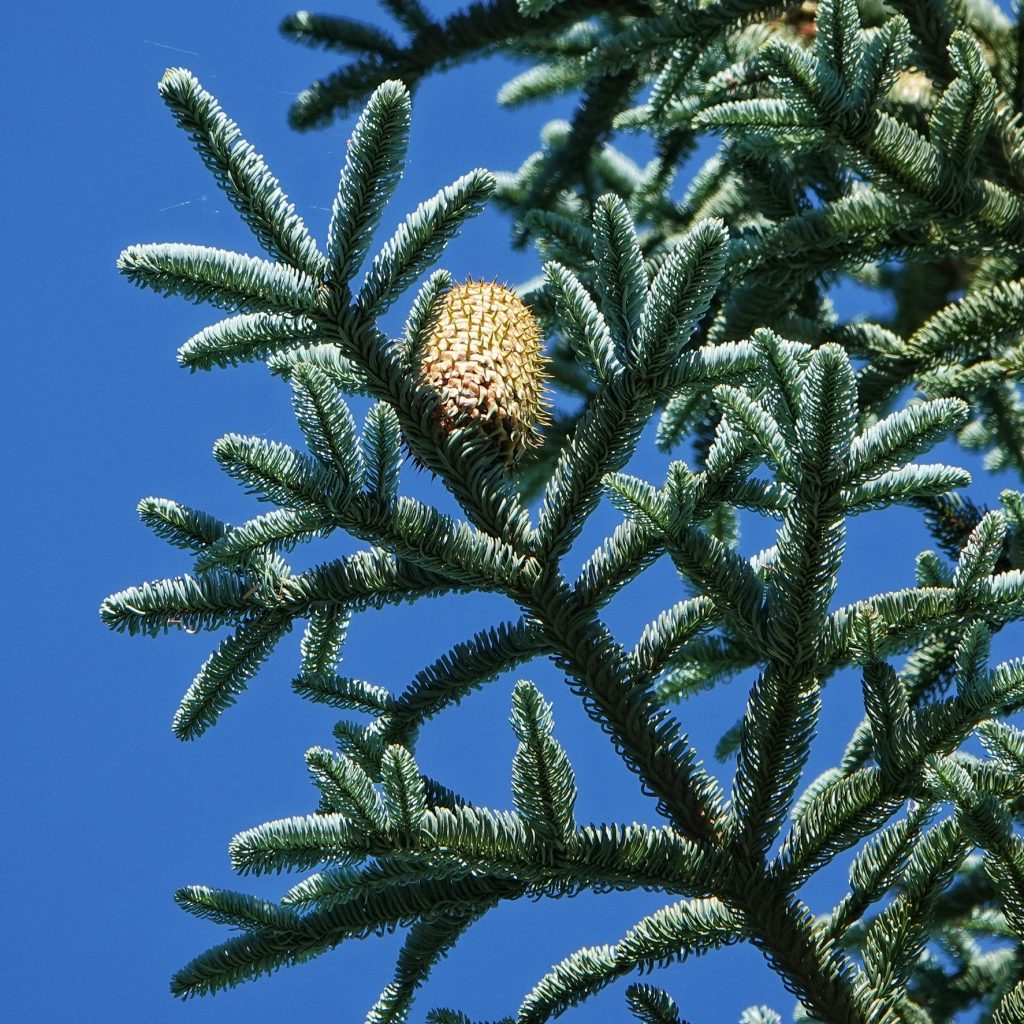
1 thought on “Abies procera (Noble Fir)”